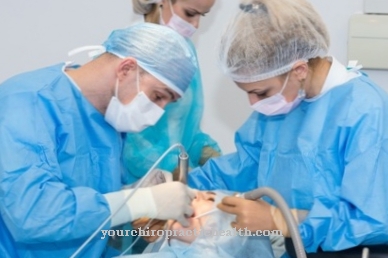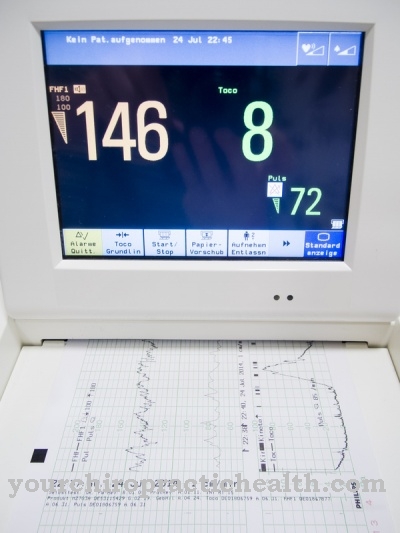A plaster cast is a so-called conservative treatment method for a broken bone. The affected bone is immobilized with the aid of the bandage until it has grown back together. In most cases, these are injuries to the extremities that are treated in this way.
What is a plaster cast?

Under a plaster cast Doctors understand a solid, rigid cast made of plaster of paris that is used to immobilize a part of the body. This is necessary, among other things, if an injury has occurred and the healing process requires absolute rest and immobility of the affected area.
Usually it is a broken bone, but severe strains or torn ligaments and tendons can also be fixed with a plaster cast. These injuries often occur on the extremities, so they make up a large proportion of the cases where a plaster cast is used.
Depending on the type of injury and the speed of the healing process, the bandage will remain on the patient's arm or leg for several weeks.
Application, function & goals
A plaster cast is always applied when it has to be ensured that the affected body region is immobilized after an injury or an operation.
After a bone fracture, for example, it heals independently, as the bone grows back together by itself. However, this takes a few weeks and can only be done completely and without complications if the affected area is fixed and therefore immobile for this period. Otherwise there is a risk that the bone will shift at the fracture site and that it may become difficult to grow together.
The plaster cast is one of the so-called conservative treatment methods for broken bones, strains or torn ligaments or tendons. It is not a therapy in the strict sense, but rather a tool to support the body's own healing. It is applied after a thorough examination of the injury, if the X-rays taken for this purpose show no displacement, splintering or similar complications.
Depending on the type and severity of the injury and the individual's ability to heal themselves, a plaster cast usually has to remain on the affected area for several weeks in order to achieve an optimal result.
After a while, the dressing can be temporarily removed by the doctor for examination purposes in order to assess the progress of healing.
Under certain circumstances, it may be necessary for the patient to take part in physiotherapy therapy for a period after the plaster cast has been removed in order to fully restore the function of the affected extremity.
Since the conventional combination of cotton bandages and plaster of paris is quite heavy and can in some cases significantly impair the affected person's ability to move, plastics are also increasingly used nowadays. These are lighter and more resistant to moisture; however, this also incurs higher costs.
Risks, side effects & dangers
A plaster cast is perceived by most patients as a hindrance to everyday mobility. During the entire period that the cast is worn, the usual movement of the affected extremity is significantly restricted.
If joints and muscles are not moved correctly or not at all for several weeks, the muscles often stiffen or degrade. In many cases, these can be eliminated by normal post-treatment exercise without the need for therapeutic assistance. Under certain circumstances, however, participation in rehabilitation measures or regular physiotherapy may be necessary.
With exercises tailored to individual needs, stiff joints can regain their mobility or reduced muscle mass can be rebuilt. Immobilizing extremities for weeks also carries a risk of thrombosis. People at risk should therefore be examined regularly. If necessary, an anticoagulant can be injected to prevent thrombosis.
Weeks of fixation can also put additional stress on the patient's skin. It is not uncommon for an unpleasant itching under the cast to occur under the cast, which can be associated with a rash. If pain, swelling or similar symptoms occur, the attending physician should always be consulted.
Diseases with broken bones
- Osteoporosis (bone loss)
- Femoral neck fracture (femoral neck fracture)
- Radius fracture (broken spoke)
- Glass bone disease (osteogenesis imperfecta)













.jpg)

.jpg)
.jpg)











.jpg)